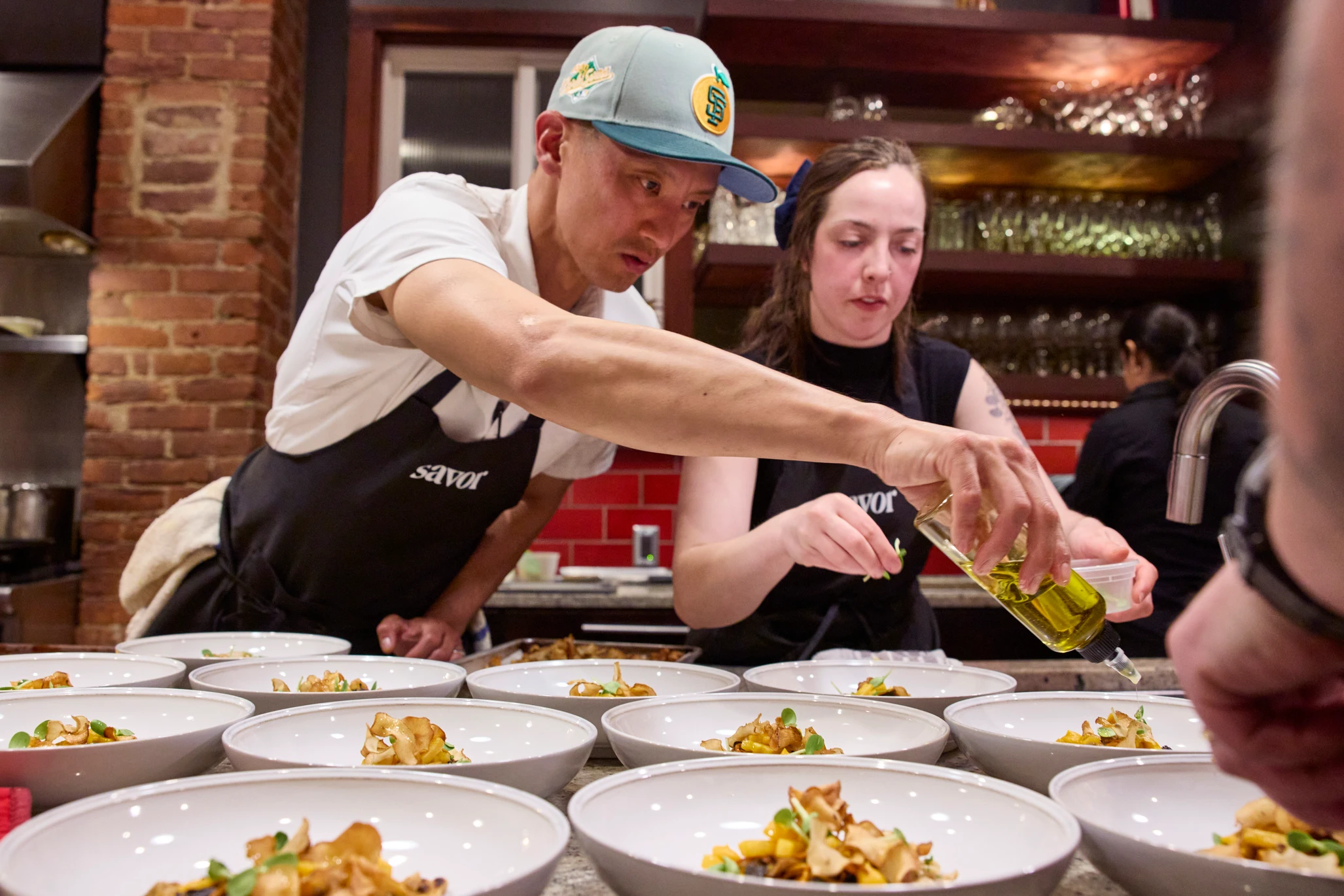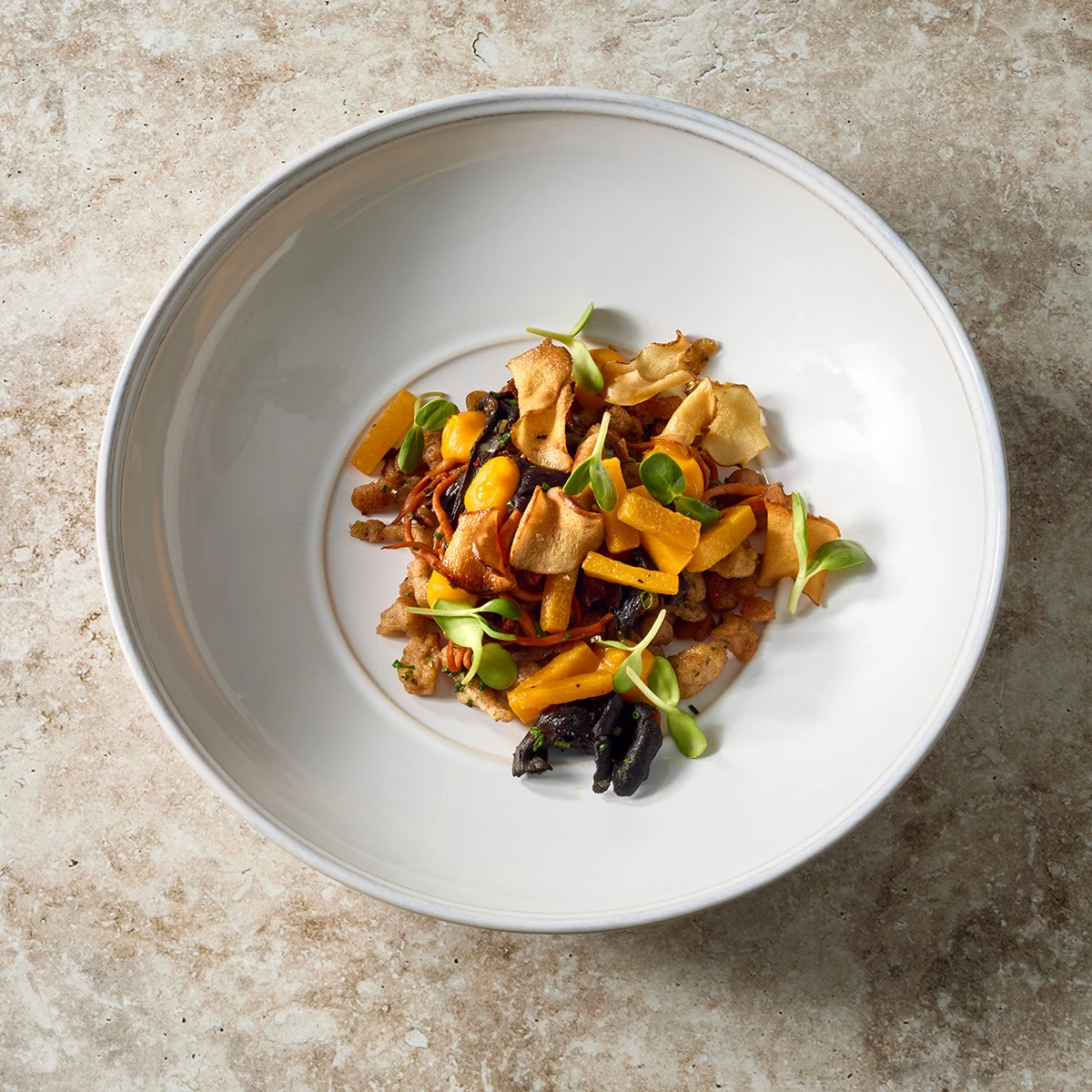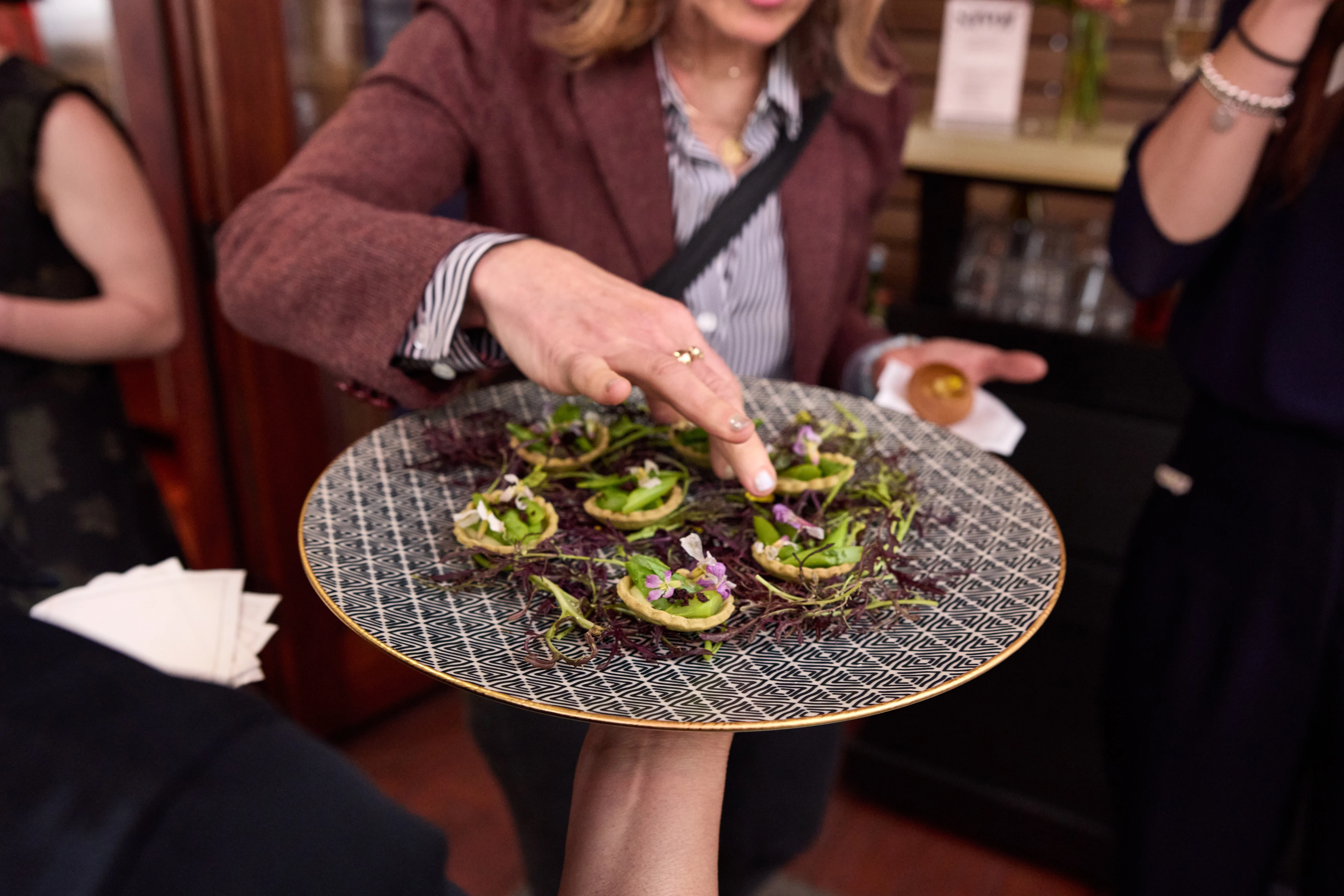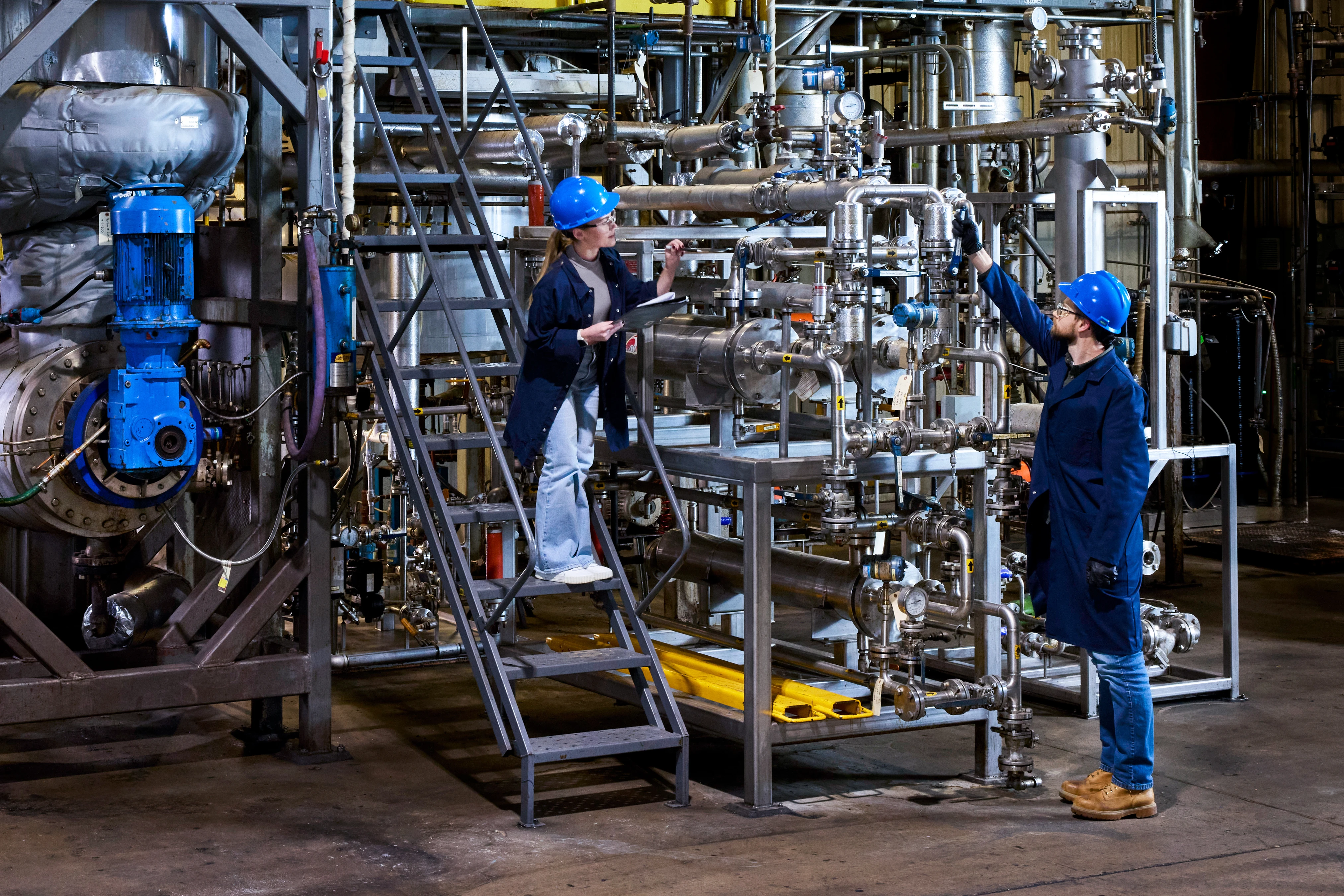On warm spring evenings in San Francisco and New York, guests gathered at a purple Victorian in the Mission District and fifth-floor loft in the heart of Little Italy. Conversation flowed as teams of chefs worked with quiet focus in open kitchens, filling the candlelit dining rooms with swirling aromas of anticipation. These dinners had been in the making for somewhere between three years or four billion depending on who you asked. As appetizers began to arrive, the collective focus shifted to food that was at once familiar and fundamentally different.
An assortment of culinary tastemakers, food systems experts, and climate solutions innovators gathered around the table. Each shared a simple truth held by every other human on earth. Regardless of diet, every calorie consumed in their lifetimes was a product of photosynthesis. Every calorie right up until they took their first bite.
The stage for the meal was set with crispy black truffle waffles drizzled in maple syrup and golden beet pani puris, a South Indian chaat with a warm burst of rich flavor. Bread & butter and salad bridged to mains of spelt flour spaetzle with honey nut squash and lion’s mane mushroom steaks with sweet potato. Chefs blended their signature styles into menus tailored to showcase the brilliance of radically reimagined butter.

Our team at Savor spent years vetting the most impactful paths to food system transformation, and the result is undeniably delicious. We’ve developed a process that harnesses elemental earth science to molecularly mirror fats without the land, water, and fertilizer inputs of agriculture. This is a new frontier for food that goes beyond the constraints of taking energy from other organisms. The potential implications for both climate health and supply chain security are profound. And butter is only the beginning.
“Consumers drive food system change,” reflected Kathleen Alexander, Savor CEO and co-founder. “We designed this process to be massively scalable, and to realize our goals, we want to connect with as many people as we can to drive excitement about the promise and opportunity of this work.”

Of the fats Savor has created, milk fats are among the most chemically complex. They’re also the fat that we as humans have the most developed sense of what is and isn’t worth eating. To break through with butter and its 80% milk fat would be the clearest signal of what this process makes possible. And not just butter. Delicious butter. Butter that laminates for pastries, emulsifies into sauces, and provides perfectly satisfying richness spread across a piece of sourdough.
“I think that was the butteriest thing I’ve ever eaten,” mused Steve Davis, smiling after finishing off the spelt spaetzle with wild mushrooms. The head of Stanford’s Sustainable Solutions Lab was joined by a chorus of satiated agreement around the table in San Francisco. The butter’s versatility was on display in savory and sweet applications throughout the meal, featuring prominently in dishes like signature German spaetzle, while serving as a vehicle for other flavors in the black truffle waffles.
“Savor butter has a higher smoke point than dairy butter, so frying the spaetzle over medium heat left a nice caramelization and color without any burnt bits,” noted San Francisco chef Anthony Yang. “It’s also allergen-free, so lactose allergies aren’t an issue.”

Along with the menu cornerstone of bread & butter, the only item to appear at both dinners was a chocolate ganache tart. The show-stopping dessert closed out the meals with three layers of culinary elements that showcase the flexibility of Savor butter. In the tart’s crust, butter coats the gluten strands of the flour, preventing strong bonds and creating a delicate flakiness. Underneath, a layer of perfectly chewy salted caramel sits atop a butter ganache that softens the dish’s texture with a rich creaminess and balances the bitterness of the dark chocolate.
As guests took their last bites of dessert, the significance of the meals came into clearer focus. Not because any of the dishes served were discernibly different from other food, but because they weren’t. There was no tradeoff on taste or fullness after the meal. It was just delicious food, made differently.


